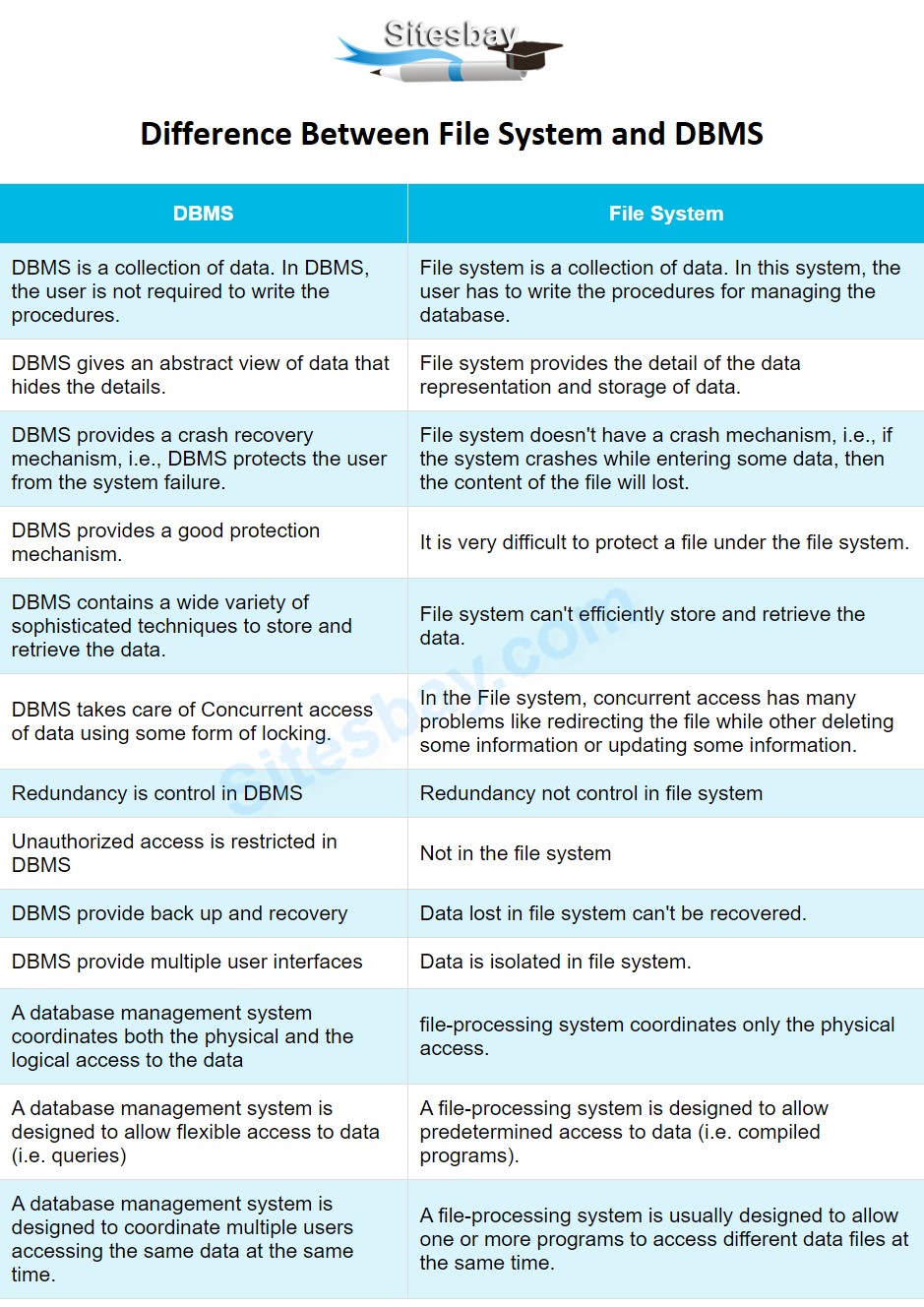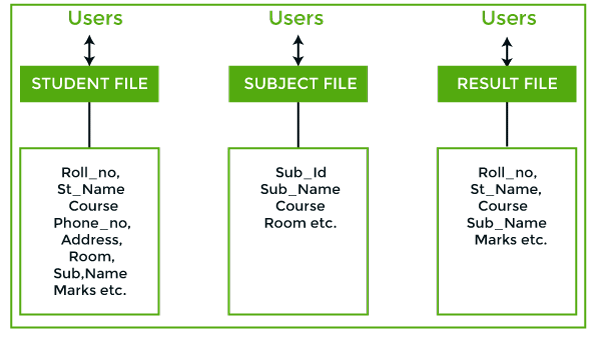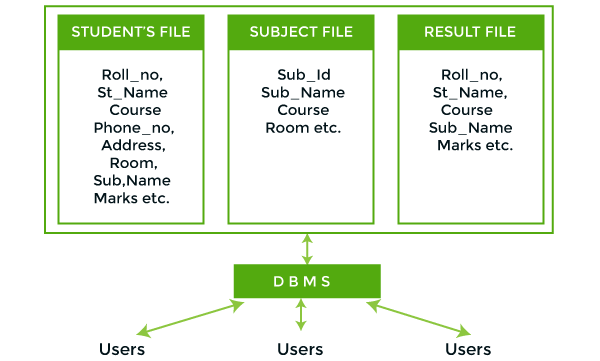Difference Between Traditional File System and Database System
The data response time increases in DBMS. Difference Between File Processing System and Database Approach is that in the past many organizations exclusively used file processing systems to store and manage data.

Difference Between File System And Dbms Sql Tutorial
Data Redundancy is more in file management system.

. A database management system coordinates both the physical and the logical access to the data whereas a file-processing system coordinates only the physical access. Each program defines and manages its data. File Processing System vs Database Approach.
File systems create files to store bytes with very few opinions. Traditional database system functions better when the volume of the data is low that is in gigabytes at most. Traditional data is the structured data which is being majorly maintained by all types of businesses starting from very small to big organizations.
A database specifically reduces the amount of duplication of data in a system. A Database Management System DMS is a combination of computer software hardware and information designed to electronically manipulate data via computer p. In simplest terms a file processing system coordinates only physical access to data.
At a very high level. In the traditional file-based approach many organization exclusively used file processing systems to store and manage data. But the file system would have given us the entire file.
By programs whereas in database management system data access is flexible ie. The key difference between a filesystem and a database is that the filesystem API is part of the OS thus filesystem implementations have to implement that API and thus follow certain rules whereas databases are built by 3rd parties having complete freedom. File-based systems were an early attempt to computerize the manual filing system.
DataBase Management System DBMS is a software package that allows data to be effectively stored retrieved and manipulated and the data stored in a DBMS packege can be accessed by multiple users and by multiple application programs like SQL Server Oracle Ms-Access. The database system may fail to give smooth results if the data size is in terabytes or petabytes. The file system doesnt have a crash recovery mechanism on the other hand DBMS provides a crash recovery mechanism.
Comparison of Traditional File-Based Approach and Database Approach. Data Redundancy is less in database management system. Integrity Constraints are easy to apply.
A database organizes and coordinates both physical and logical data access. For example some applications make a distinction between data files files that contain binary data and text files files that contain ASCII data. Therefore in traditional file processing every user will be defining their own constraints and implement the files needed for the applications.
In a typical file processing system each department or area within an organization has its own set of files. Advantage of using DBMS over the traditional file system. In the database approach 3 types of data models exist.
File System is a general easy-to-use system to store general files which require less security and constraints. In traditional file processing system data access is predetermined ie. Also traditional file processing system allows only physical access to data whereas the database management system allows both physical and logical access to data.
Integrity Constraints are difficult to implement in file system. Database management system is used when security constraints are high. Difference between File processing system and DBMS.
In the database approach a single repository of data is maintained that is defined once and then accessed by many users. Additionally since a database is designed to allow access. This tutorial explains the difference between Traditional File System and Database Management System.
File-based system is a collection of application programs that perform services for the end-users such as updating insertion deletion adding new files to database etc. The amount of data that it can hold defines its capacity. In traditional database system a centralized database architecture used to store and maintain the data in a fixed format or fields in a file.
A file system is a software that manages and organizes the files in a storage medium whereas DBMS is a software application that is used for accessing creating and managing databases. In the File system approach there exists no Data Independence. In this file processing system each unit or department in an organization has its own set of sperate files and the records are grouped based on their categories.
In database management systems data files are the files that store the database information whereas other files such as index files and data dictionaries store administrative information known as metadata. The main differences between a file system and a database system have to do with the abstractions that let you manage the bytes you are storing. On the other hand the Hadoop system works better even if the data size is huge.
The data in one file may not relate to the data in any other file. Such a file size is large hence its access time will also. When a computer user wants to store data electronically they.
If we search for any train in IRCTC then we get results about that train only in a fraction of seconds.

Dbms Vs Files System Javatpoint
Difference Between File System And Dbms In Tabular Form Pediaa Com
No comments for "Difference Between Traditional File System and Database System"
Post a Comment